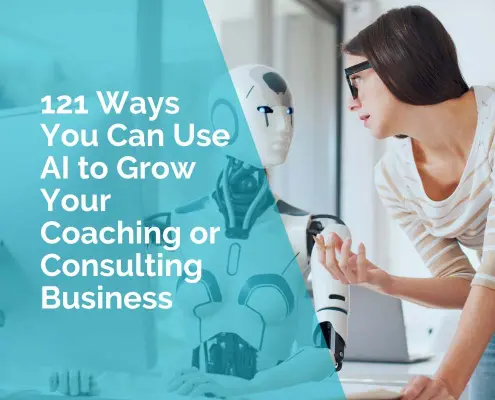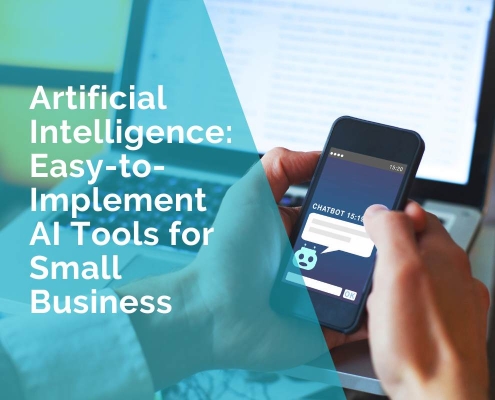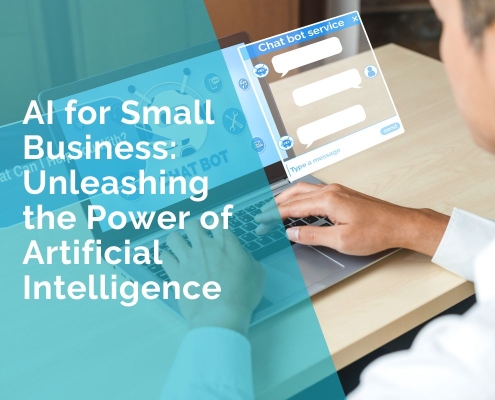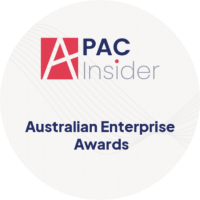How AI-Powered Business Tools Revolutionize HR Tech and Employee Rostering
Many businesses now rely on artificial intelligence (AI) to streamline business operations, cut costs and enhance workflow productivity. The new shift within human resources is leveraging AI-powered business tools to transform HR systems by moving away from traditional processes and focusing on onboarding, employee satisfaction and talent acquisition.
HR departments often manage staff scheduling through spreadsheets and whiteboards, but are now working towards using automated tools to help save time and reduce any human errors. As employee expansion is expected to grow, workforces are becoming more diverse, and the need for intelligent rostering solutions is greater than ever.
In this article, we will explore the growth of HR tech, the need for rostering solutions within AI upgrades, the benefits of AI-driven rostering systems, and how to overcome any potential challenges or concerns associated with business systems.
Let’s dive into the power of employee rostering software and see how it benefits employees and business owners to enhance business operations and employee satisfaction.
The Evolution of HR Tech
HR technology has undergone many large transformations within the past decade. Initially focused on automating basic tasks, today’s HR platforms are exploring advanced features such as analytics, AI-driven decision-making, and mobile friendliness.
Many modern HR technologies can now support remote and hybrid working models to enhance employee experiences. Artificial intelligence plays a role within HR tools by:
- Predicting employee turnover
- Automating resume screening
- Personalized training
- Streamlining business operations
- Optimising workforce scheduling.
According to McKinsey & Company, AI can deliver up to 40% improvement in labour productivity, making it a must-have within HR teams. One of the most transformative applications of AI is known as employee rostering. This helps businesses create accurate and fair schedules at scale.
The growth of HR tech should be taken into consideration, and businesses, especially HR departments, should ensure that they understand the purpose behind new advanced tools and the support they provide to small and medium businesses.
As AI continues to reshape the HR landscape, businesses are increasingly turning to smart tools that enhance efficiency, accuracy, and employee satisfaction. Solutions like Happy HR exemplify how automation and AI can streamline everything from recruitment and onboarding to compliance and performance management, freeing up HR teams to focus on strategic growth.
Why Employee Rostering Needs an AI Upgrade
Creating a reliable employee roster involves balancing labour laws, staff availability, business demands and employee preferences. For larger teams within industries such as healthcare, retail and hospitality, manual rostering can sometimes be challenging.
This is where employee rostering software powered by AI is a must. By anaylzing data, forecasting demand and factoring in any employee constraints, their tools can ensure the right person is available at the right time.
Many advanced tools are built for both small and large businesses, which ensures managers can create and update schedules and that employees can receive accurate updates. The mobile-friendly interface and automation features can help cut down any scheduling conflicts within the workplace.
Key Benefits of AI-Driven Employee Rostering
AI-driven employee rostering software offers many benefits and advantages for business owners to see. Let’s look into the benefits of AI-driven employee rostering for businesses.
Increased Efficiency
Traditional scheduling tasks can take hours a week. AI-based solutions can automate the workload by reducing scheduling time by 80%. This helps to reduce any scheduling errors and provides better coverage during peak times within working hours.
Improved Accuracy
Many modern tools can help to reduce human error and work with compliance for labor laws, union rules and policies. This is important for regulated industries where compliance issues can result in hefty fines.
Enhance Employee Satisfaction
AI tools can incorporate employee preferences and availability into current schedules, helping to develop work-life balance. Happier employees can result in better results and engagement, which is important in today’s market.
Mobile Access
Many mobile apps can allow employees to view, accept and swap shifts anywhere at any time of the day, reducing any confusion. This also enhances employee engagement by ensuring employees can take preferred days off, look into shift lengths and work on different system locations, where employees can feel respected, and retention improves.
Data-driven Decisions
These platforms can offer insights into attendance trends, patterns, and productivity, ensuring HR and operational managers can make reliable decisions. Managers can use this data to make smarter staffing decisions and reduce any unnecessary overtime for employees.
Adaptability
With more teams working towards being remote or hybrid working, centralized cloud-based scheduling tools are seen as important. Employees should be able to access schedules from anywhere around the world, and AI can help managers adjust to any new changes and conditions quickly when working remotely.
Integration
Rostering software can integrate with HRIS platforms, payroll software and communication tools. This ensures employees can work from a single platform and ensure all task management systems are completed.
As you can see, there is a wide range of benefits when it comes to using AI-driven employee rostering tools to ensure business operations are enhanced and employee satisfaction increases.
With the endless benefits which offer many insights into the effectiveness of new advanced tools, businesses should understand the need to update current business systems for HR departments and move towards advanced processes which offer reduced errors and employee satisfaction.
AI and the Future of Workforce Management
The future of HR is within intelligent automation. Beyond rostering, AI is being used within the workplace to help manage any difficult staffing schedules and predict how changes will affect labor costs and customer service levels.
For example, AI can work with HR leaders to answer questions like:
- What happens to our overtime costs when shifts are shortened by 30 minutes?
- Which employees are at risk of burnout based on current schedules?
Many advanced tools utilise machine learning to provide information on patterns and offer feedback to enhance recommendations. Over time, these systems can evolve into offering support as planning assistants. The future of AI within workforces is continuing to expand, and businesses should be aware of the benefits AI tools provide to support employees and business owners.
Integrating Rostering with Broader HR Systems
One reliable way to maximize AI-based rostering is by integrating it with HR software ecosystems. Many advanced tools integrate time tracking, task management systems and communication tools towards one single platform for better workforce management.
This integration provides a comprehensive view of employee performance and productivity, enabling managers to support their teams more effectively and allocate resources more efficiently. This helps reduce the need for multiple logins and improves operational support.
Case Study: Improving Scheduling in Retail
A medium-sized retail company implemented an AI-based rostering tool to address any issues regarding shift coverage and achieve a higher turnover. Within three months of doing this, they:
- Scheduling time dropped by 70%
- Absenteeism reduced by 30%
- Employee satisfaction scores improved by 20%
The company also used analytics to optimize their shift coverage based on peak shopping hours as a way to increase sales and customer satisfaction.
This real-world example highlights the importance of utilising AI-powered business tools to offer convenience and stay ahead in the competitive market.
Addressing Common Concerns
Regardless of the benefits, concerns and challenges can be involved when HR teams are trying to adopt AI systems due to cost, complexity and job replacements. Here are some ways to address these concerns:
- Cost: Many modern rostering platforms offer affordable plans for small businesses.
- Easy to use: These tools are designed for non-tech users to be able to use new systems and even have mobile support.
- Job replacements: AI doesn’t replace HR professionals; it helps to empower their roles and take on more challenging tasks without repeating the same workload.
By following these tips for common concerns, businesses can begin to flourish with the support of new AI tools and ensure HR teams are comfortable with new systems being implemented into current software.
Choosing the Right Employee Rostering Software
Not all rostering tools are made for equal support. When looking into new solutions, you can consider the following:
- Easy to use to ensure both managers and employees can use the new systems
- Customizability for effective workflows and to ensure compliance is followed.
- Integration capabilities will ensure systems are combined together, such as payroll, time tracking and communication tools.
- Mobile friendliness can provide real-time updates and facilitate effective online engagement.
- Customer support and ongoing assistance to new users.
By following these considerations, businesses can identify the best rostering software to meet their specific needs and ensure their HR teams are satisfied with the software provided.
Final Thoughts
AI is no longer a concept but is seen as a necessity for today’s HR departments. From scheduling to recruiting, AI-powered tools are now helping businesses expand with data-driven decisions and employee-centric systems available.
Investing in the right employee rostering software can ensure that the workforce can change by empowering HR teams and frontline staff. With new improved features, real-time communication and powerful automation, HR tech is seen as offering a difference by supporting businesses to expand.
The HR landscape is evolving daily, and businesses are thriving by embracing innovation and utilising AI tools to keep employees at the heart of their operations. Businesses must understand the purpose behind these advanced tools and how they provide a vast amount of benefits for expansion and employee support.
Invest in the right employee rostering software to ensure your business can continue to grow while keeping HR teams happy.
***************
Omer Oron











